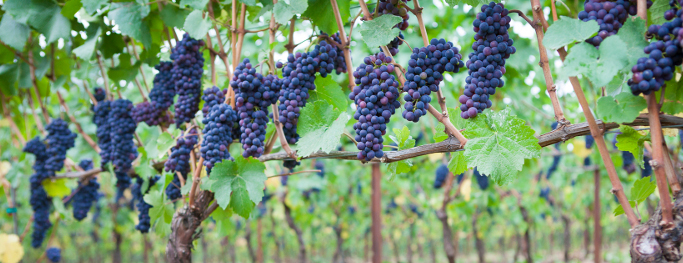Could Digital Imaging Harvest a More Perfect Pinot?
New method could help identify the exact right moment to pick wine grapes.
Image

Ripe pinot noir grapes
Media credits
Anna M. Campbell at Elk Cove Vineyards
(ISNS) – Digital snapshots may make cute holiday memories for all to share, but now a similar technology may soon help create superb Syrahs or marvelous Merlots. Researchers have created a new way to peer inside a grape to identify its composition and variety through computer imaging. This could cut back on laborious chemical analysis for winemakers.
Francisco José Rodríguez Pulido, a researcher at the University of Seville in Spain, said that the new system could work for both small growers as well as large companies.
"The cultivation of the vine and the production of quality red wines are facing serious problems due to high temperatures and climate change," said Pulido, adding that it makes it difficult for growers to know when to pick. "Usually, there is a gap between the pulp and the seed maturation, particularly in red grapes," which means that the different parts of each grape mature at different speeds, making it tough to pick at the right moment to maximize phenols – the coveted flavor notes that contribute to taste, color and mouthfeel.
Pulido says that the process takes just a few minutes. A camera snaps a high-resolution picture of the seeds. Then, customized software identifies the seeds in the image and measures their color according to a standardized index of colors
The close relationship between appearance and chemical composition makes it possible to estimate how mature the seeds are – which is a good indication of when to pick the grapes. The process was tested and proven in Spanish grapes, but Pulido says that it should work in any type of red or white wine.
Pulido and his colleagues published their research on the new method in the journal Analytica Chimica Acta in November.
Gabriel Balint, a professor at the Oregon Wine Research Institute, in Central Point, said that determining grape maturity is a toilsome process, and a digital tool could help – but he is not convinced that color is the best way to determine ripeness. "I couldn't see any correlation between basic data like soluble solids, acidity and pH and these colorimetric parameters," he said.
“Many winemakers are still using these basic parameters to schedule the best time for harvesting. Moreover, many winemakers and growers are using the sensory evaluation of the berries, including seeds, to assess the maturity levels," said Balint. He added that winemakers could use something like this method in conjunction with other tools.
Ripeness means different things for different winemakers, depending on their style and ultimate vision. At Jalama Wines in Lompoc, Calif., winemaker Mark Cargasacchi says he tastes the grapes as well as using chemical tests to analyze acidity and sugar levels – always looking for a consistent product, which can be tricky. "As hard as we try, Mother Nature always throws us a curveball," he says.
At Adelsheim Vineyards in Newberg, Ore., enologist Tracy Faulds says they pick based on flavor. "I think you can make really good wine based on taste, but you can't make one based only on numbers," she said.
Faulds said that technology like cold-stabilization, filtration and additives like copper and carbon have enormously improved the winemaking process over the past few decades, and she expects that it will continue to improve wines around the globe. But, she said, technology has its limits. "Winemaking at its core is an agriculture practice and if you don't have good grapes you're not going to make good wine."
At Fiddlehead winery in Lompoc, Calif., winemaker Kathy Joseph said that focusing only on color, as Pulido's technology does, cannot be the sole basis for assessing ripeness.
"I routinely consider many other very important assessments of ripeness, including berry turgidity [a measure of plumpness], raisining and ripeness variability within the cluster, pH and acid balance as well as projected alcohol balance, vine physiology, skin tannin and stem maturity and perhaps most importantly, taste," said Joseph. "It is that artistic talent of the winemaker that assesses all of those factors as a package to determine the best moment for picking, which also must be in sync with the selected style for that winery."
